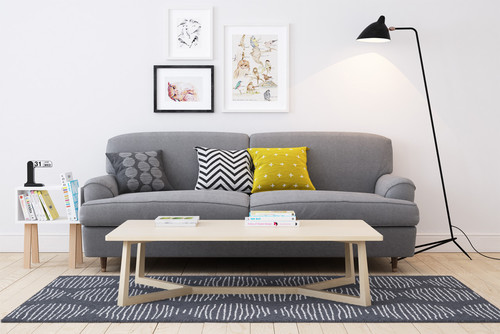Tips for getting your task lighting right

By Brenna Malmberg
The pros weigh in on how to light your living room, bedroom and office desk for reading and other tasks
When it comes to task lighting, home design and health professionals can help you pick the right light for your space. This is the type of light you use when you read, write or study something up close. It’s an important light to get right so you can avoid eyestrain and keep processing the task at hand. Read on to see what advice they have — your eyes will thank you.
In the living room: When you curl up on the couch to enjoy a good book or finish a crossword puzzle, a nearby lamp will improve the activity.
In this space, have three lighting sources when possible, such as natural light, overhead lighting and a task light, says Dr. Andrea P. Thau, president of the American Optometric Association.
One source of light could be sunlight coming through a window. Next, you should have a ceiling light or lamp that fills the whole room with light. Third, add a task light, such as a small lamp or reading light that focuses directly on your activity.
This third light is ideally located to the side of your head or behind you, Thau says. A light overhead or in front of the person reading can reflect off the reading material — whether paper or electronic device — and into the reader’s eyes. Putting the light to the side or behind improves visual performance and comfort, she says.
Style-wise, look for a lamp with a slim profile, says Lynne Stewart, lighting specialist at House of Lights. That way you’ll avoid having a large lampshade near your head while you’re reading.
In bed: If you love to read in bed, you can’t always count on natural light. Instead, you need a great reading light. When choosing these lamps, Stewart allows her clients’ existing bedroom setup to dictate placement. If clients like lamps on their nightstands, she simply sticks with that option. No additional installation is needed, and styles can be easily changed.
If you are an avid reader and willing to install a permanent light fixture, a mounted light is the way to go, Stewart says. These types of lights may be mounted on the wall or attached to the side of the headboard. They also can be wired into the wall with a switch near the bed or plugged into a nearby outlet. No matter which option her clients pick, Stewart likes to make sure they can reach the switch without having to get out of bed.
At a desk: If you have a home office space with a computer, you don’t want a bright source of light right next to the sides of your computer, Thau says. And avoid having a window directly behind the screen or a bright lamp shining from behind the screen or on it. That’s because it can create glare on the screen and cause your eyes discomfort. Instead, have low to average light sources throughout the room, and avoid complete darkness, as that also can create eye discomfort.
If you need more light on the desk surface for reading a book or writing, Stewart recommends a small lamp that doesn’t shine on the computer screen.
Original article: Houzz
Read original article here.
Original article: The Province
Read original aricle here.



